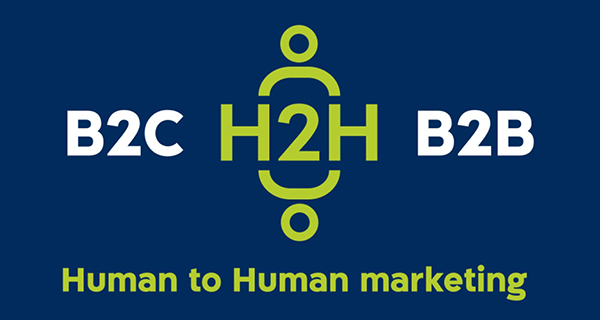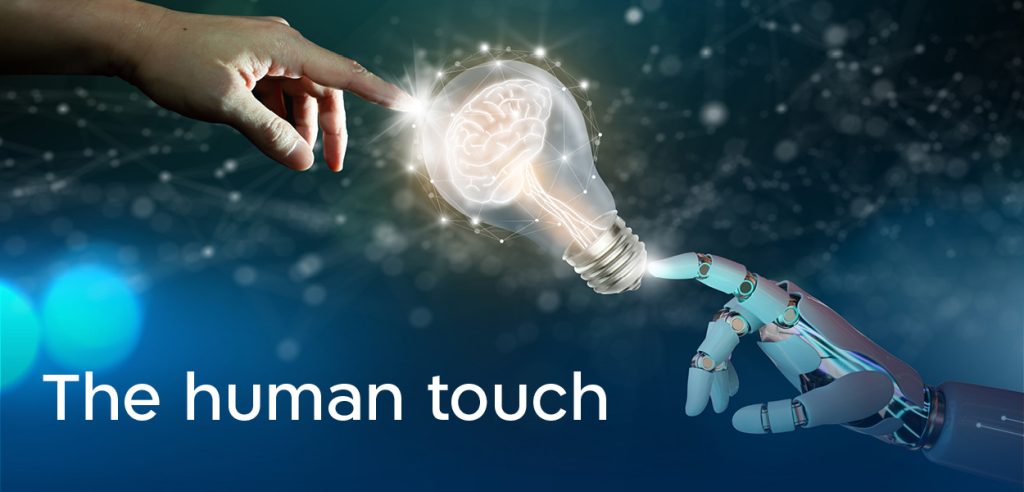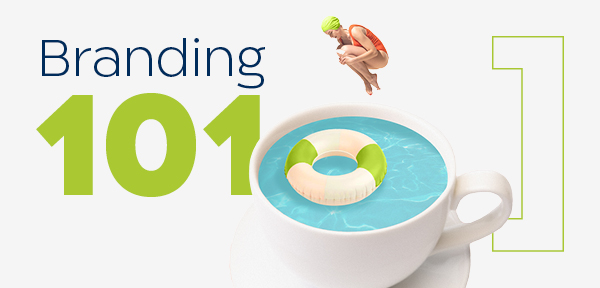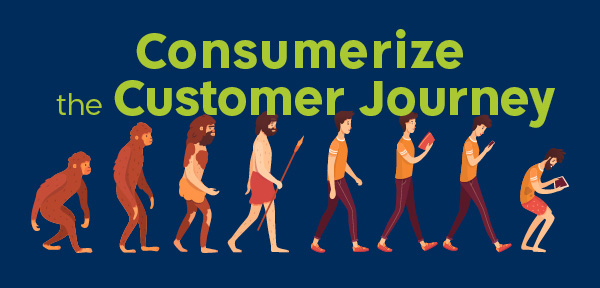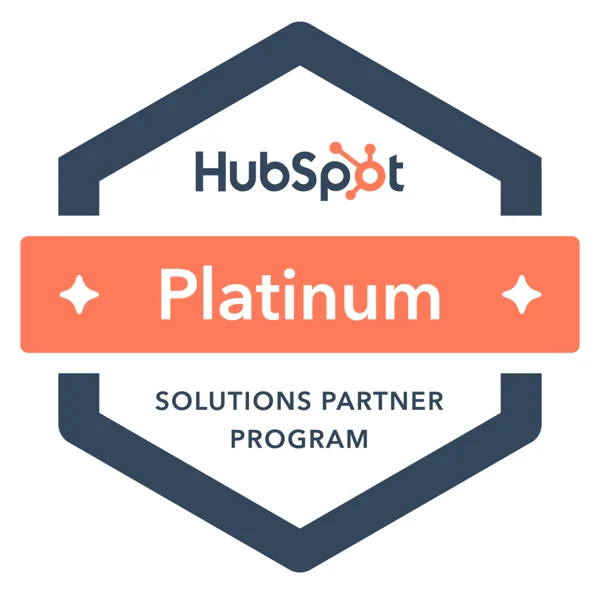The BL[OZ]
Rules, Regulations & Medical Brands How your medical brand can stand out within the regulatory framework
By
Nirit Elyovich, MBA
, 15/08/2024
Balancing marketing ambition with regulatory compliance is no easy task for medical brands. Our latest blog explores how early collaboration between marketing and regulatory teams can transform these challenges into opportunities, ensuring your brand stands out while staying compliant. Discover the smart strategies to help your brand shine within the regulatory framework.
When the journey takes an unexpected turn
During branding strategy kick-off meetings, we take a deep dive into your product, technology, and service. We’re looking for a fresh perspective, a promise not yet made, a story yet to be told. At this point, we get excited as we hear about groundbreaking technologies, solutions, and life-enhancing, life-prolonging products. Our jaws drop. With this WOW feeling, we continue the learning process in which we talk to customers, analyze the competition, and create a multi-participant meeting within the company to fine-tune its significant and differentiated strengths and generate outstanding benefits for its customers. As the process continues, we begin to understand the regulatory limitations. Suddenly, “Cinderella”, your extraordinary technology is being held back by regulatory limitations and is covered with “soot”.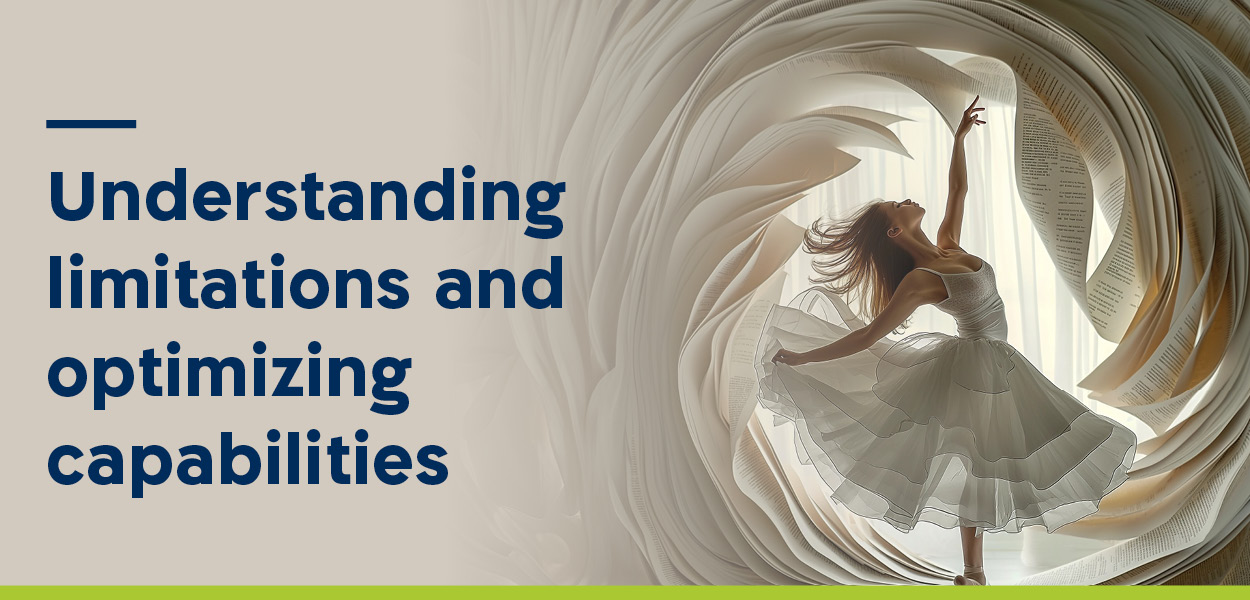
Understanding limitations and optimizing capabilities
During the process, we’ve heard “It’s a given” or “It's powerful, but I can't confirm it" more times than we can count. Responses like these made us understand there must be a better way. That’s how our new module was born. It’s placed right at the beginning of the branding strategy process, which sets the stage for an open and guided dialogue between marketing and regulatory early on.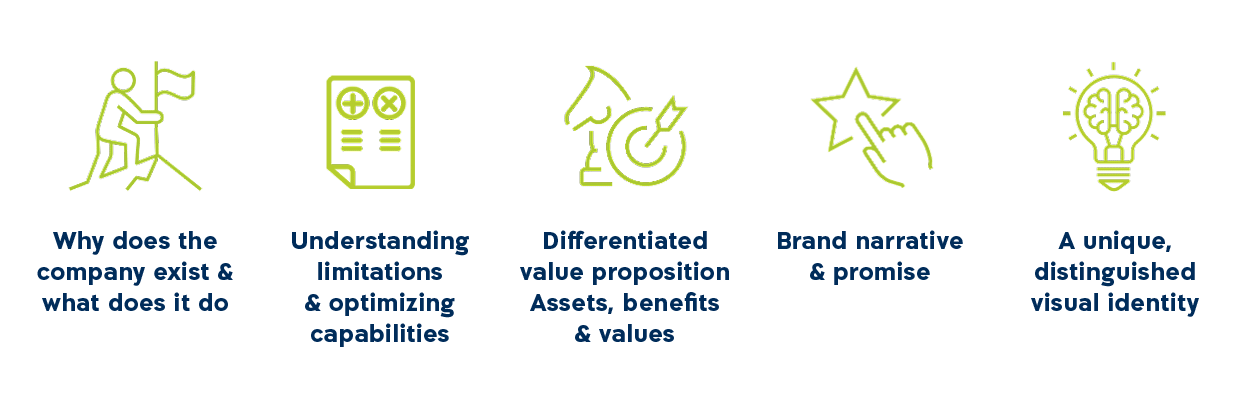
Challenging the norms
This dialogue is about helping the marketing team to understand the limitations in depth, and for the regulatory team to delve into the marketing team’s needs. It’s an authentic dialogue that creates a space to carry out activities that weren’t possible before. Understanding the precise needs opens up new perspectives and enables solutions within the boundaries of regulations. We understand the importance of compliance, but our experience shows that there are many degrees of freedom that are not being tested.It’s not about overstepping the bounds of the approved claims, but we also don’t want to take a step backward in the name of conservatism.
Sometimes it's a matter of overall wording, sometimes it's just changing one word. It's the little things that make a big difference. Stopping to ask questions often gives you a competitive advantage. Sometimes, there won’t be any flexibility in the claims you make, but at least you’ll know that you’ve turned over every stone.Structured and managed conflicts are an opportunity
Remember, whoever sits at the decision-making table wants the company to succeed and do the best they can. Inherently, conflict is not a negative; it can also be an opportunity. Don't let emotions run the process. As we often say, “Don’t be right, be smart!” As with every relationship where there’s an inherent conflict, there’s great value in professional guidance to create the conditions for a productive dialogue. To meet this need, we’ve created a special collaboration between OZ Global B2B and Leap, led by Moran Faibish, who has extensive experience in leading marketing in global medical companies. Moran has hands-on experience in bridging the gap between marketing and regulations to create deep and unique brand promises — promises that aren’t possible without providing an informed and professional framework that enables constructive communication.Play smart
The more we play smart within the regulatory limits to make the most of your claims, the more we can create a differentiated value proposition that more accurately reflects your breakthrough technology. This is how your brand will shine. We’ll be there every step of the way to guide the process, refine the messaging, and make sure your “WOW” comes through loud and clear. If you’ve nodded your head while reading this, it’s time for us to talk.


From Fruit Stand to Frontlines: The Unexpected Journey of the Watermelon Emoji
By
No items found
, 25/07/2024
Navigating digital symbolism can be intricate, but the case of the watermelon emoji adds a unique layer of complexity. It’s a prime example of how symbols can shape online narratives and influence global perceptions. This post uncovers the strategic use of the emoji and offers actionable ways to support pro-Israeli voices in the digital arena.
But first, a disclaimer: My name is Rivi, and I'm a proud Zionist (I believe in the Jews' right to self-determine in their ancestral homeland).
In recent years, while immersed in the online world of Hasbara, I’ve witnessed firsthand the challenges of representing Israel's narrative in a vast digital landscape. With Jews comprising just 0.2% of the global population, our voice can easily be drowned out in the maelstrom of social media.
This blog post examines a fascinating case study in digital activism: how a simple fruit emoji became a battleground for narrative control. We'll explore the marketing strategies at play and their implications for Israel's online presence. While we analyze these tactics objectively, our goal is to empower pro-Israeli voices in this ever-evolving digital dialogue.
At the end of this blog, you'll find actionable recommendations on supporting content creators who are amplifying Israel's perspective in the online world.
The Roots of a Symbol
As we approach National Watermelon Day on August 3rd, let's slice into a juicy marketing tale that's more complex than meets the eye. It's the story of how a simple fruit emoji became a powerful symbol in one of the world's most enduring conflicts. The roots of this story begin back in the 1960s, when the watermelon, with its colors reminiscent of the Palestinian flag, became a covert symbol of Palestinian identity. Palestinian activists used the watermelon imagery in graffiti and posters, primarily because in 1967, Israel passed a law prohibiting the raising or display of Palestinian flags (which had been canceled, during the Oslo Accords in the 1990s). The watermelon became a symbol of political resistance, and if we fast-forward to today's digital age, this symbol has found new life as an emoji, skillfully wielded by pro-Palestinian activists in their online narratives.

A Clever Marketing Strategy
But here's where it gets interesting from a marketing perspective: the use of the watermelon emoji isn't just a random choice. It's a clever strategy that serves multiple purposes:- Bypassing Algorithms: By using an innocuous fruit emoji, activists can often fly under the radar of content moderation systems. It's a digital sleight of hand that marketers call "Algospeak."
- Viral Potential: Emojis are the universal language of the internet. They're easy to use, easy to share, and can convey complex emotions and ideas in a single character. It's virality in its purest form.
- Continuity of Message: By adapting a historical symbol to modern digital platforms, the pro-Palestinian movement maintains a consistent narrative across generations. It's brand continuity at its finest.
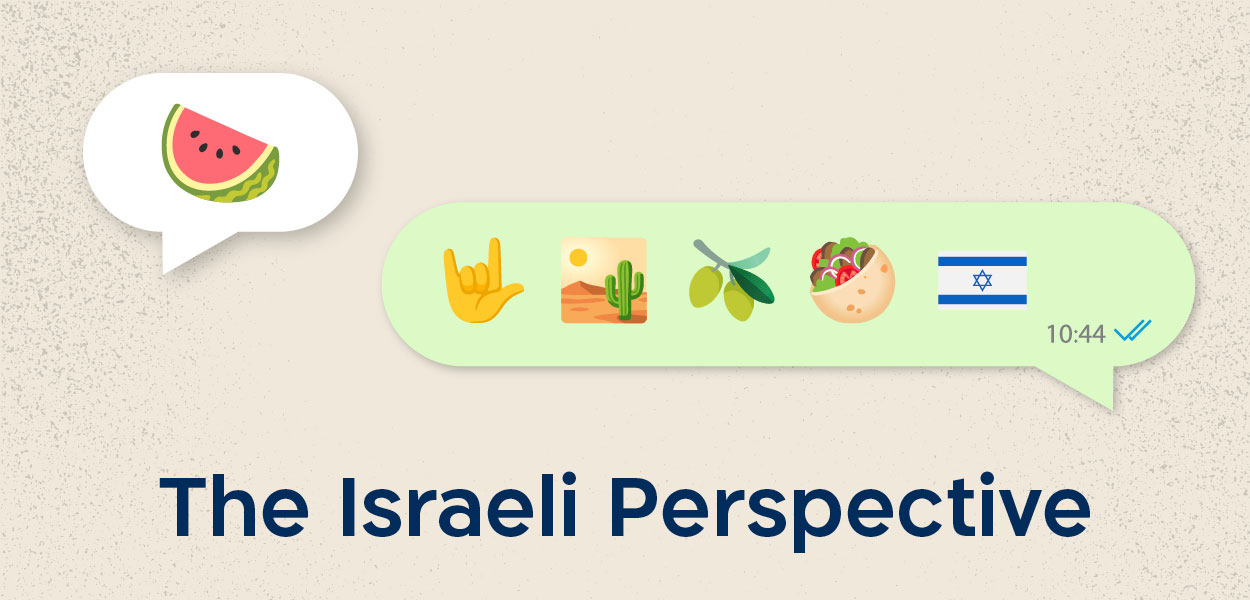
The Israeli Perspective
Yet every story has another side. In Israel, where watermelons are a staple of hot summers and where the country produces a whopping 140,000 tons annually, this digital co-opting hasn't gone unnoticed. Enter the counter-narrative: Pro-Israeli social media users have begun their own campaign to reclaim the watermelon emoji. It's not about fruit anymore; it's about identity, representation, and the power of symbols in the digital age. Some Israeli users have started adding emojis of the Israeli flag, watermelon, and yellow ribbon (for the hostages) to their usernames, while others are creating actual content around watermelons: recipe videos, which are inherently popular on social media, featuring watermelons with the Israeli flag proudly displayed in the background. Other users (typically younger ones) are simply riding existing trends, adding watermelon eating to dances, trendy sounds, and more. Some have gone as far as creating simple online games centered around watermelons, while pro-Israeli creators are directly addressing the appropriation of the watermelon as a Palestinian symbol, calling it an unfounded act.
Marketing Insights from the Emoji Wars This digital tug-of-war offers fascinating insights for marketers:
- The Power of Symbols: Who knew a fruit could carry so much meaning? It reminds us that in the right context, even the simplest symbols can convey complex messages.
- The Importance of Proactive Strategies: The pro-Israeli response underscores the need for brands to be vigilant about their symbols and ready to reclaim them if necessary.
- Authenticity Matters: The most effective responses are those rooted in genuine cultural connections. Israel's agricultural tie to watermelons provides an authentic base for their counter-narrative.
- David vs. Goliath in the Digital Age: The pro-Palestinian digital presence significantly outnumbers the pro-Israeli one. It's a reminder that in the world of digital marketing, it's not always about who's loudest, yet sometimes it is.
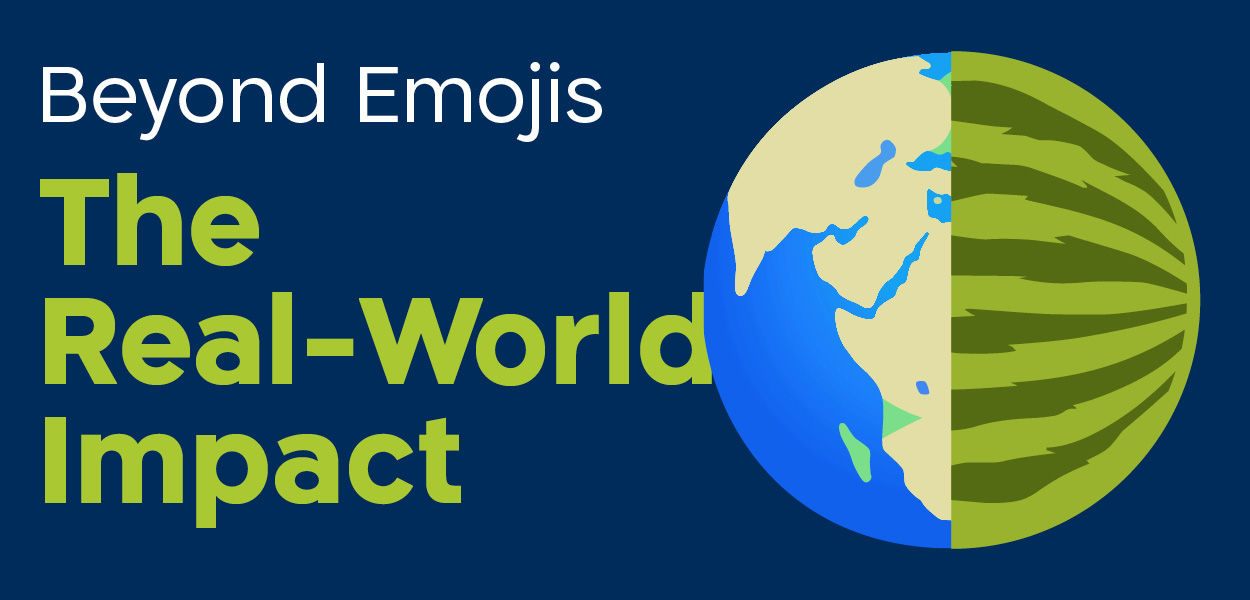
Beyond Emojis: The Real-World Impact
While we engage in digital discourse, let's not forget the real-world stakes. Our brave soldiers are fighting daily to protect our nation and bring our hostages home. This online 'battle' is more than just emojis and trends; it's our way of supporting Israel's narrative on the global stage. As we participate in these digital efforts, we stand united with those on the front lines, showcasing the resilience and spirit of the Israeli people. Every post, every share, is a small act of solidarity that contributes to our national strength and resolve. In this digital age, we all have a role to play in supporting our country and its values.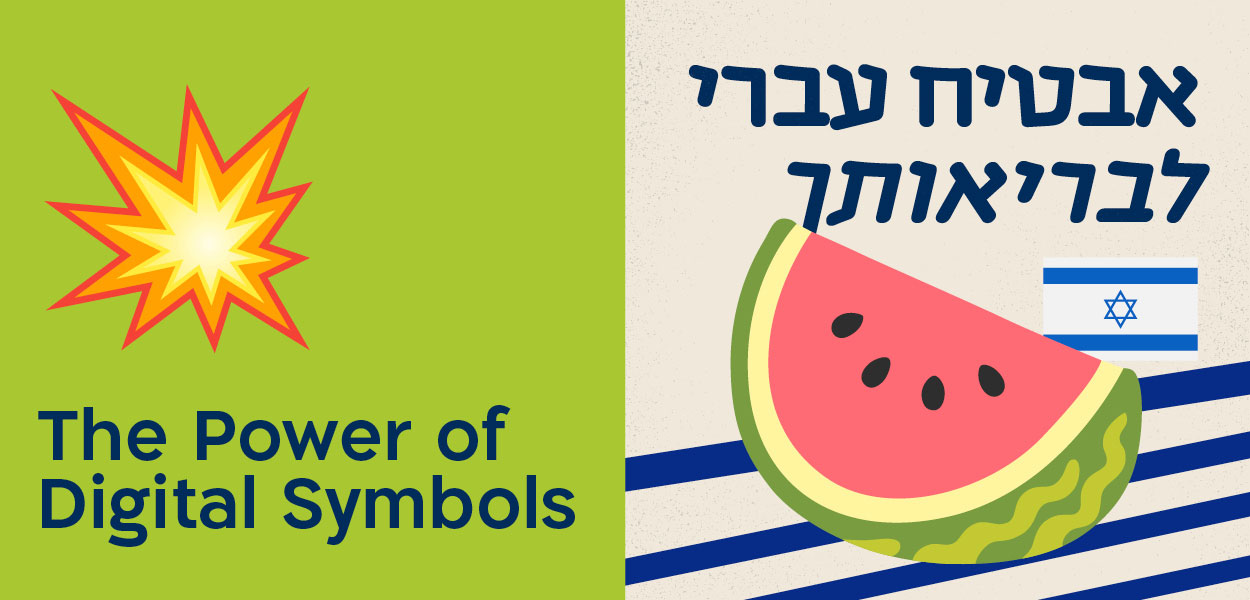
Conclusion: The Power of Digital Symbols
This National Watermelon Day, as we enjoy this summer fruit, let's also appreciate the complex world of digital symbolism it represents. It's a world where marketers, activists, and everyday users are constantly innovating, adapting, and yes, sometimes battling, in the ever-evolving landscape of online communication. After all, in the grand fruit bowl of digital marketing, the watermelon has proven it's not just a seasonal favorite – it's a year-round player in the game of global narratives. Join the Digital Movement Want to show some love to Israeli content creators this Watermelon Day? Here are a few ways you can contribute: 1. Follow prominent Pro-Israeli content creators: Adiel - TikTok Instagram Montana Tucker – Instagram TikTok Baby Ariel - TikTok Instagram Michael Rapaport – Instagram Tiktok Daniel Ryan Spaulding - Instagram TikTok Mia - TikTok Instagram Stop antisemitism – TikTok 2. Like and share posts featuring the "Hebrew Watermelon": instagram instagram tiktok tiktoK tiktok tiktok tiktok tiktok tiktok 3. Feeling creative? Use this trending TikTok sound to make your own Watermelon Day video: Tiktok Remember, this upcoming Watermelon Day might see increased pro-Palestinian activity on social media. For those of us who are pro-Israel and want to contribute, the methods mentioned above are a great way to start. Every like, share, and post counts in this digital age of narrative shaping. Let's make our voices heard while remembering the real battles being fought and the importance of standing united for Israel.Stars are born. Winning B2B brands are built over time.
By
Nirit Elyovich, MBA
, 07/07/2024
Brand building is always complex, but B2B brands bring a whole level of complexity that simply doesn’t exist in the B2C world. It's a golden opportunity to create a one-of-a-kind standout brand promise that will make a difference in the world.
Building a new brand or giving an existing brand a facelift, is a golden opportunity to create a one-of-a-kind standout brand promise that will make a difference in the world. Building a significant brand is complex, but B2B brands bring a whole level of complexity that simply doesn’t exist in the B2C world. Decision-making processes are lengthy, decision-makers come and go, and increasingly, the decision-makers are Gen Y and Gen Z. The road to the end user is paved with importers, distributors, and dealers. The orientation of most of the people you are working with is engineering or sales. Your brand needs to make its way into everyone's hearts on the long and winding road ahead. From time to time, I still hear that "in the business world, people make rational decisions." In my experience, people are people even when they sit in the decision-making chair. Their considerations are professional, business, and personal and the brand needs to touch all these points
A meaningful brand must be relevant, differentiated, and inspired1. Be relevant
Before you begin, define your audience. Unlike launching a product line that appeals to distinct customers, a B2B brand speaks to a wide range of audiences – existing and potential customers, employees and candidates, investors, suppliers, opinion leaders, and influencers.
However, you operate in a very specific world, so finetune the audience that interests you and create circles of influence. Who is in the first circle and who is in the more distant circles? The brand needs to speak directly and accurately to members of the first circle and still be relevant to other circles.
To be relevant, you need to know your audience, what their challenges are, and where you can help them deal with their challenges well. To motivate people, we must touch their “operating” buttons, speak their language, and solve the problems that bother them. We want to sell them what they want to buy and not what we want to sell — even if it's the same thing.
2. Build a differentiated value proposition
To build a differentiated value proposition, start with A, B, and C: Assets, Benefits, and Core Values. Assets – What are your biggest assets? What strengths are you most proud of? Make a list of the things you're best at – unique patented technology, people with unique knowledge, exceptional support and service, and more. Make sure that every strength that makes up your list is grounded in reality, and not an aspiration for something you'd like to have. From the list, extract the three most significant strengths. As much as possible, select those that differentiate you from the competition. Benefits –Step into your customers' shoes and think about what they get out of your strengths. This is where you ensure that you provide professional benefits that help them upgrade their professional field; business benefits that contribute to their business performance; and no less important, personal benefits. Ultimately, everything is personal simply — because people want to make sure that choosing you promotes their reputation within the organization. Core Values – Brand values are always important, but even more so in the B2B world. People are an integral part of your value proposition – whoever defines the specifications with the customer, develops, sells, installs or integrates, provides service and support – all these and more bring the brand to life. They must follow a uniform set of values to ensure that they deliver the benefits to the customer and subsequently deliver on the brand promise. If the company was founded recently, the values may be naturally infused into the brand. If the company is alive and kicking, the values are usually passed down over the years. Make sure the values reflect the company's DNA.
There's nothing new under the sun You may find that your competitors have an asset, benefit, or value that appears to be similar to yours. However, the combination of assets, benefits, and values must be unique to your company. That's why starting with unique assets and formulating benefits that address your clients' deep and diverse needs is important.
The more you get to know your clients, the more likely you will produce differentiated benefits. This is another opportunity for differentiation: your founders, owners, and significant employees are the unique spirit that makes your company what it is.
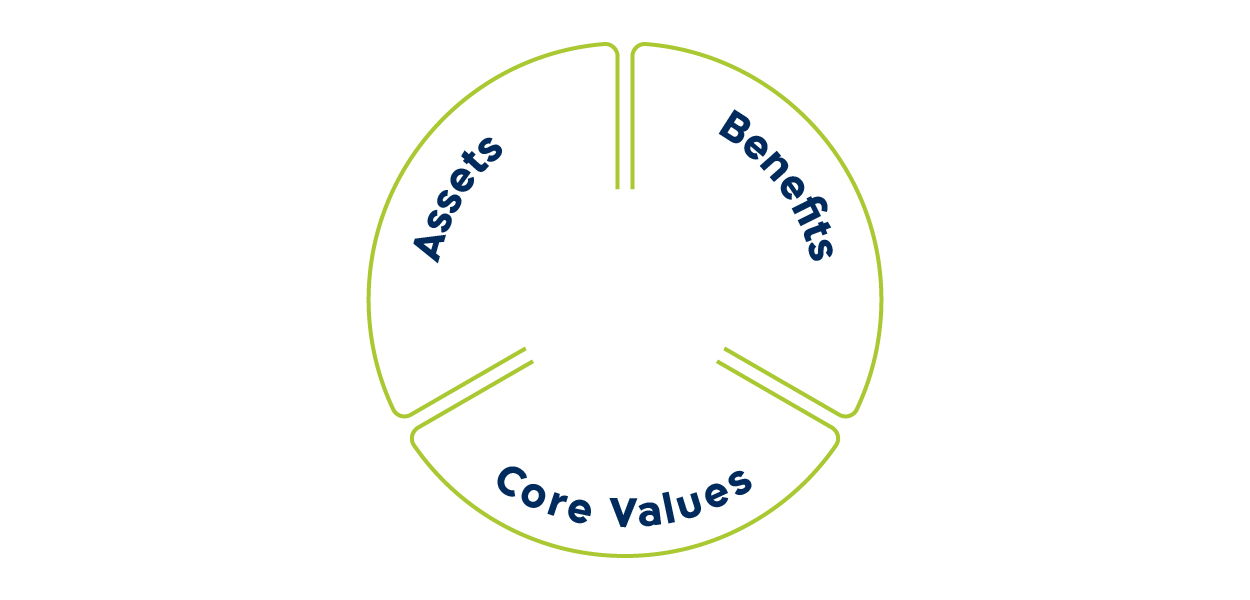
3. Bring inspiration to life with a promise
To make sure your brand inspires you and everyone you meet, go back to your vision. The thing that fascinated you when you started your business or that attracted you to join the company. The reason you get up in the morning and go to work. The North Star lights the way for you, even on days when visibility is poor. Your vision is an ambitious statement that describes what your organization ultimately wants to be. Spoiler alert: you're not supposed to get it, you’re supposed to aspire to reach it. As Aviv Geffen put it, " The moon is so high up there that we can't touch it, and there are some who are still trying.” Your vision is there to lift you high above your daily activities and inspire you.
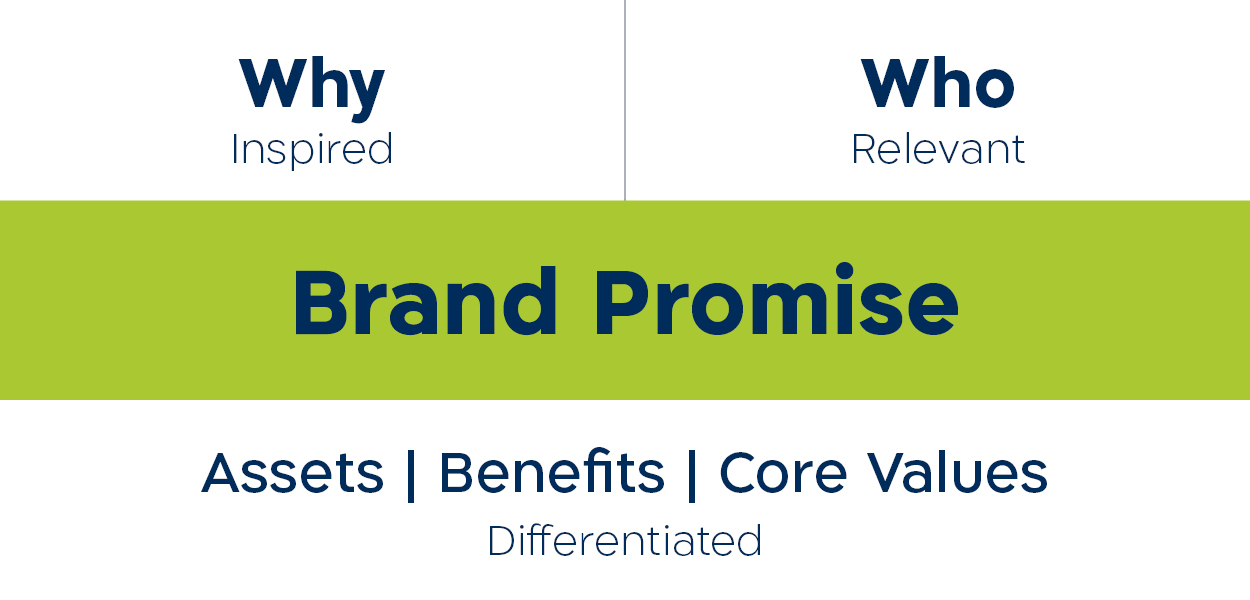
Building or refreshing a brand is a strategic task
Don’t cut corners. Enjoy the journey as much as the destination. Get as many people involved in the process as possible to make everyone feel a part of it. This is how to make them the best ambassadors for your brand.
Formulating a brand strategy is an extremely important and complex process, but it’s only the beginning. From now on, the entire organization has to fulfill it, to bring the brand into the lives of those who experience it exactly as you intended. In the B2B world, your brand will touch a lot of people for many years to come. Make sure that everyone has the same experience, irrespective of the language they speak.
A brand is a promise. A strong brand is a promise that is fulfilled every day in every encounter between the brand and the world.
Will AI Replace Designers or Serve as Their Creative Allies?
By
Yoav Sondak
, 21/02/2024
Will AI replace designers, or will it become their indispensable assistant? Can anyone become a designer with AI's help? Discover Yoav's insights after extensive experimentation with AI tools, and learn what AI itself has to say about the matter
- Automated image editing features — analyzes images to intelligently suggest enhancements and automatically makes adjustments such as color neutralizers and detail enhancers. This speeds up the editing process and is a valuable resource if you’re looking for inspiration or need to make quick refinements.
- Content-aware fill and object removal tools — by understanding the content of the image, enables you to easily remove unwanted objects or fill in gaps within a scene. This allows greater flexibility and streamlines the editing workflow.
- Accelerates the ideation and iteration phases — lets you explore diverse concepts efficiently.
- Intelligent recommendations — makes suggestions for shapes, layouts, and color schemes based on the context of their project. This makes the conceptualization phase faster and may even help you overcome a creative block.
- Organization and management of design assets — automated tagging and content categorization make asset management easier and help you quickly navigate vast libraries of resources. It’s able to analyze vast datasets and identify patterns that we might miss.
- Rapid prototyping — enables quick experimentation with lots of variations.
Traditional graphic tools have also made huge strides
In recent years, existing software and applications we’ve been using for years have incorporated a variety of tools that shorten processes and streamline design work. Because designers can give online feedback, the tools' capabilities keep getting better. During image processing, design tools can complete missing details, increase resolution, carry out color corrections, and produce more controlled and accurate results. There are also lots of options for image manipulations and variations. These advances have meant that the time between planning and the finished product is much shorter, and have saved me and many others from a tiring technical struggle with traditional design tools. However, AI has added new superpowers which can create impressive artwork at warp speed.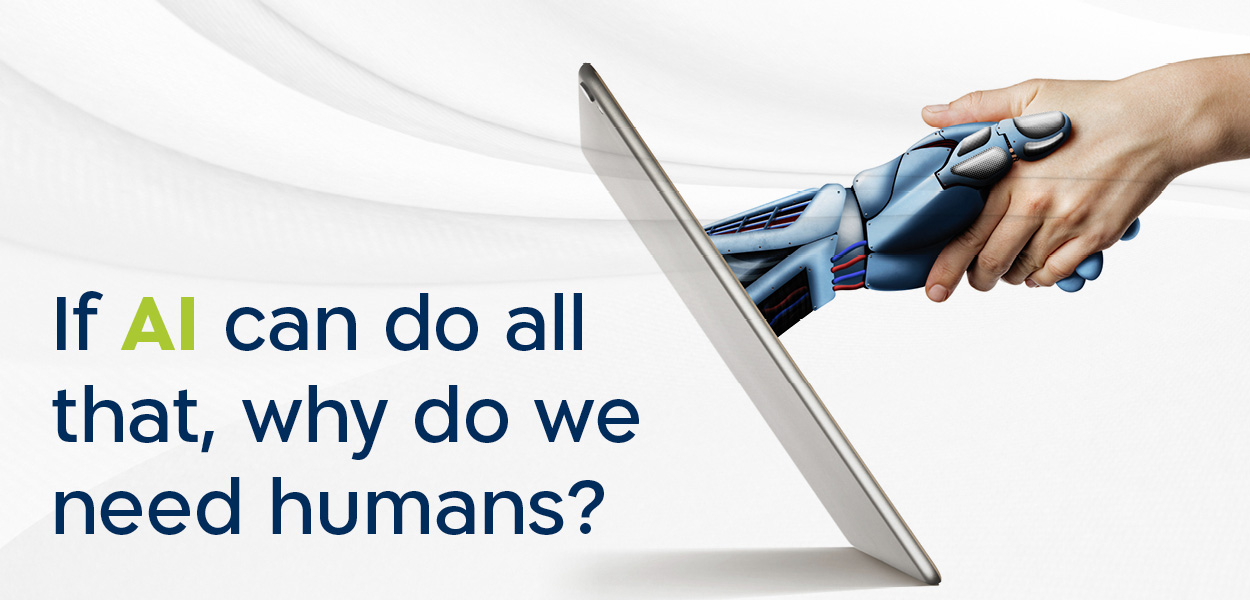
If AI can do all that, why do we need humans?
While AI provides a broad range of design options and there is a wealth of tools to choose from, the act of selection and focus during the design process has become more challenging. The need to differentiate the customer’s brand, memorably present their messages, and tell their unique story means that every designer needs a clear understanding of what they want to create using the tools. Formulating the design prompt and selecting results, when every result seems to be ‘beautiful and impressive’, means that designers need to carefully examine what is ‘right and appropriate’ — and ask themselves what will yield the desired results. It’s the same question that we’ve been asking for years when approaching a design task, long before AI tools entered our lives.The human touch
“While AI excels at generating designs based on existing patterns, it lacks the intrinsic understanding of cultural nuances, emotional subtleties, and context that human designers bring to the table,” responds ChatGPT, adding that design is not only about aesthetics but also about storytelling, conveying emotions, and understanding the audience – elements that are deeply embedded in human experience. It goes on to point out that the human mind possesses the ability to empathize, interpret abstract concepts, and infuse designs with cultural relevance. Designers are adept at translating complex ideas into visual narratives that resonate with people on a profound level. “The intangible aspects of creativity, intuition, and emotional intelligence are quintessentially human and crucial to the design process,” it notes.
Don’t fire your designers!
Bearing these unique human attributes in mind, ChatGPT’s conclusion is almost inevitable: While AI image generators are valuable tools, amplifying designers’ creative capacities and streamlining workflows, they are best seen as collaborators rather than replacements. The future of design lies in a harmonious collaboration between human designers and AI, where each contributes its strengths. While AI enhances the design process by offering efficiency and inspiration, according to ChatGPT, “the unique qualities of human creativity, ingenuity, and understanding will continue to be an indispensable force in the world of design.” As with any AI application, there are ethical considerations. Designers must “be mindful of potential biases in AI algorithms and exercise discretion in their application. Striking a balance between automation and human intuition remains crucial to preserving the authenticity and creative vision of the designer.” ChatGPT predicts that “As technology continues to advance, the symbiotic relationship between AI and design is poised to reshape the industry, unlocking new realms of creative possibilities.” On a personal level, I use AI design tools daily to carry out various tasks and to fuel my creative process. I also find that ChatGPT is useful in helping to formulate prompts and finding the right wording for the industry or application. The more accurate the prompt, the better the results. However, personal experience has shown AI can’t replace the invaluable interactions between our design team and our clients. We’re able to dig deep into their story and translate that into unique and powerful visuals that communicate their brand promise. It’s the ‘secret sauce’ that makes the difference. In short, AI will become our creative allies, but they’re not going to replace us any time soon.Branding 101 – The Branding Process Explained
By
Inbar Telem
, 03/09/2023
Want to know the secret sauce of branding? Our latest blog post has it all! Learn how inspiration fuels our journey, how design brings brands to life, and how businesses evolve through effective branding. Click here to uncover the branding recipe for success!

Step One – How to Start the Branding Process for a Business?
The start is life itself, because every day we're exposed to hundreds of messages, ideas, videos, texts, and images. Later it all comes together, and our mind begin processing all these inspirations into new, original, and unique design and language for a specific client. At Oz, we make sure our team, in this case, our designers, is exposed to diverse content worlds and various content styles. This opens up their minds to creativity, from which different brands for different companies can blossom (even if they're in the same industry, they'll create something unique and original – that's the beauty of it!). The branding process for a business begins as a strategic process where we research and analyze the brand, the product, the company, or the service – and answer the age-old questions – what is the company's vision, what makes the company special, what customers expect, and what the competition offers. To differentiate the brand effectively, it's essential to examine competitors – what visual and textual language they use, what messages they convey to the world, and what their customers think of them. During this examination, we come across tons of content and inspiration on the web, and it's a fantastic process. All the research and in-depth analysis, combined with the ideas and inspirations, meld together to form the foundation of the brand – the unique value proposition, the narrative, the promise, and the brand's values.
Step Two – How to Implement the Branding Process?
This is the step everyone seems to be familiar with – the name, logo, fonts, color palette. Supposedly. Since everyone talks about this step, it's crucial to understand that without a solid foundation and thorough research, it won't work. The brand's cornerstones (based on the strategic messages, remember?) need to be creatively and visually translated into the brand's language – both in verbal elements (the brand's name and slogan) and visual elements (the logo, fonts, shapes, and colors). The brand's domain, characteristics, and values will be expressed through its visual appearance. Importantly, the design should not only be eye-catching but should also have longevity. Trends come and go, but your branding should remain stable for years. Our designers have the ability to translate the emotional world into the visual world, making your target audience express positive emotions, identify with your brand, and remember your look (for the next time they encounter you) – or in short, to create an impactful brand for you.
Step Three – How Does a Business Change as a Result of Branding?
So, we've gathered inspiration, worked with a professional branding agency (like OZ, ahem), researched, and analyzed, and the designers have prepared sketches. And the most exciting part – the management approved it! So now what? Implementation! At the end of the branding process and the creation of the brand's visual language, it's time to infuse it into every marketing and reputation aspect of the company. The new language will be applied across the board – on social networks, envelopes, outdoor signs and ads, physical offices, pens and notebooks – anything that comes to mind (and if it doesn't, our client managers have plenty of ideas). Effective design is measured by its versatility. If the base has a strong and focused idea, it will be clear how to continue and develop that into the brand's language in every format – digital and print.From a Simple PPT to a Winning Presentation
Speakers: Rivi Kesten Buk and Nevo Levin
Practical Tips for PowerPoint Presentations From Oz's Experts
UX/UI trends in the B2B world – What to take & leave behind in 2023
By
Naomi Lifshitz
, 18/01/2023
When I just started my career, an intelligent woman told me that only when I understand.
- What’s on the menu? “When planning the user experience, we have to put ourselves in our users’ shoes. We all have limited time and between work, home, and family, we don't have time to scroll through endless websites in the search for information,” says Naomi.
- Make some space!
- Give the footer the respect it deserves “Just because the footer’s at the bottom of the website doesn’t mean it doesn’t deserve a place of honor,” notes Naomi. “While the footer may be located on the ’fringe’ of the site, we shouldn’t treat it as such. When specifying the site structure every part of the site is important. We’re not going to add unnecessary pages or elements to the site, but the footer appears on every page and needs to be designed accordingly.”When building a brand strategy for businesses, it’s important that it speaks the same language – everywhere it appears – and that includes the footer. Give it space and design it in a brand-compatible manner, incorporating creative brand elements and enticing messaging. Scroll down to Unilog’s footer to see how it reflects the brand’s personality.
- No more excuses! That’s so yesterday “Leave the excuses why you can’t build a website in 2022,” says Naomi, adding that, “Many businesses avoid building a website on the grounds that they don’t have sufficient budget, information, or products to build a complete site. But keeping your website short and to the point puts paid to that excuse.”
Consumerize the Customer Journey
By
Nirit Elyovich, MBA
, 25/01/2022
Early in my career, a wise woman said customers pay my salary, not owners. It's vital for marketers to consider future customers' needs.
The new B2B customer is a digital native
Our childhood determines our future behaviors as adults, the people we become, and the decision-makers we grow up to be. It is also true of the technological environment in which we were raised.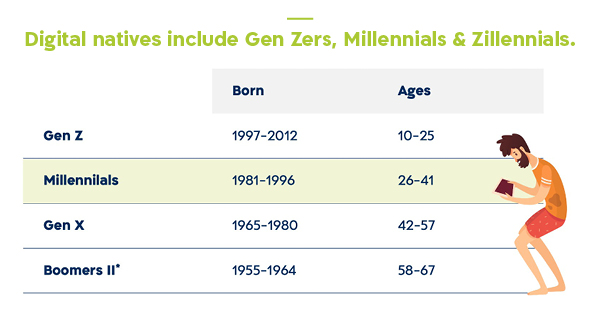 The millennials, also known as Generation Y, were born after 1980. They are now in their 30’s. Generation Z, as you can see in the table, is still young, but we will soon see them influencing our businesses. Since technology is changing very quickly, a sub-generation was born between the Millennials and Generation Z. Zillennials were born between ‘93-‘98 and were influenced by more advanced technology than the Millennials.
For their entire lives, digital natives have been surrounded by technology, social media, mobile devices, computers, and the internet. They speak this digital language as their mother tongue. They did not learn this language in their 20’s, 30’s, or later. They do not have an accent, so to speak.
The millennials, also known as Generation Y, were born after 1980. They are now in their 30’s. Generation Z, as you can see in the table, is still young, but we will soon see them influencing our businesses. Since technology is changing very quickly, a sub-generation was born between the Millennials and Generation Z. Zillennials were born between ‘93-‘98 and were influenced by more advanced technology than the Millennials.
For their entire lives, digital natives have been surrounded by technology, social media, mobile devices, computers, and the internet. They speak this digital language as their mother tongue. They did not learn this language in their 20’s, 30’s, or later. They do not have an accent, so to speak.
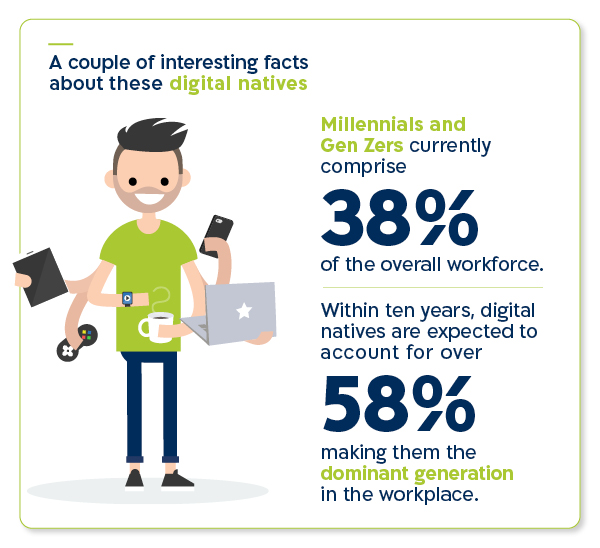
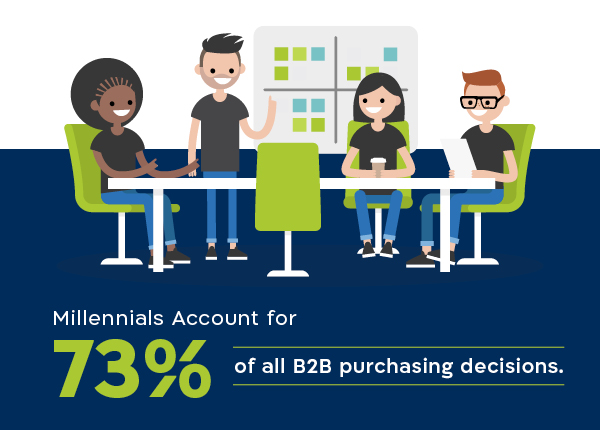 This impressive figure tells the whole story: More and more millennials and gen zers are entering the B2B decision journey, some as technological or professional influencers and others as decision-makers. It is important to note that among the people involved in decision-making, you usually meet several generations.
A few months ago, we at Oz Global B2B did a project for the American agricultural market. The intergenerational integration in the decision-making process that arose there was very prominent.
This impressive figure tells the whole story: More and more millennials and gen zers are entering the B2B decision journey, some as technological or professional influencers and others as decision-makers. It is important to note that among the people involved in decision-making, you usually meet several generations.
A few months ago, we at Oz Global B2B did a project for the American agricultural market. The intergenerational integration in the decision-making process that arose there was very prominent.
-
- A family business where the younger generation initiates a decision, and the founding generation approves it. Sometimes the founder initiates the decision but immediately passes it on to the younger generation to check online what the options are.
- A senior manager at a big business closes a deal, but the people in the field - professionals or salespeople - do not “speak” the same language. This will greatly affect the next purchase.
The Millennials and Gen Zers highly influence who will enter the decision funnel
About 50% of all product searches on the web are conducted by digital natives. The customer journey is long, complex, and involves many stakeholders.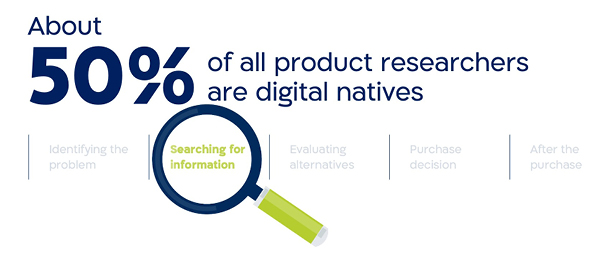 By the time the customer recognizes that he has a problem, we are, in most cases, not there. Identification is an internal stage from which someone is appointed to start researching information to find options for a solution.
50% of those who conduct the research and seek alternatives regarding a product or service, may not take an "official" part in decision-making but are the ones who put the relevant suppliers in the decision-making funnel. They are the ones who build the long list. They are the ones who decide whether or not you will be included in the “consideration group,” which is of critical importance.
By the time the customer recognizes that he has a problem, we are, in most cases, not there. Identification is an internal stage from which someone is appointed to start researching information to find options for a solution.
50% of those who conduct the research and seek alternatives regarding a product or service, may not take an "official" part in decision-making but are the ones who put the relevant suppliers in the decision-making funnel. They are the ones who build the long list. They are the ones who decide whether or not you will be included in the “consideration group,” which is of critical importance.
Two tips to gain the trust of digital natives:
1. Be authentic!
The generation that grew up on social networks, fake news, and unfounded marketing does not believe in marketing messages and does not believe in unproven statements. They have developed a hypersensitivity to online messages - they suffer from a blatant lack of trust in what is being said online. They continue to consume information online, but with a very large firewall. The bright side of it is that digital natives recognize authenticity when they see it..So what does authentic marketing look like?
-
- Get your executives to use social media Customers want to know the people behind the executives or the company representatives that they are in contact with.Make sure your site reveals who you are beyond your formal title. What topics do you choose to share? Who are your friends, what groups do you belong to, and to whom do you respond to?LinkedIn is not everything. Feel free to diversify to other social networks - Facebook, Instagram, Twitter, and even Tik Tok.
- Share user-generated content from real people Show real things, with real customers behind them. If you trust your product, let it tell your story.
- Go live on social media platforms Talk without filters. To digital natives this sounds obvious, to digital immigrants, it is less trivial. At first, the digital immigrants posted posts after editing them numerous times. Then they agreed to post an edited video. The transition to live video is scarier, but this is exactly the meaning of authenticity.
- Promote employee advocacy Empower your employees to share smart, quality content with their own social networks. On average, employee networks have 10x more connections than a company has followers. Plus, according to the Edelman Trust Barometer, people are 3x more likely to trust company information shared by an employee than that shared by a CEO.
2. Consumerize!
This word does not exist in the dictionary yet but already stars in the literature that follows trends in the B2B world. As Mona Akmal, Falkon CEO and Cofounder, once said, “As work and life flexibly intertwine, so must our approach to reaching our target users.” Gone are the days when the customer was a business person between 9-17 and a consumer on evenings and weekends. Studies show that the business customer is very much influenced by his consumer experience and expects to have a similar experience in business purchases. The customer experience touches on all stages of the journey - collecting information, placing an order, contacting the company up to paying.- More than 80% of B2B customers stated that they will look for a new supplier if their expectations in terms of customer service and user experience are not fulfilled.
- According to McKinsey & Co, B2B brands score below 50% on customer experience index ratings on average, compared to 65 to 85% for typical B2C brands.
- Gartner illustrates that 77% of B2B buyers report that their last purchase was very difficult or complex.
To sum up…
- The digital natives are digital animals. They were born into it, and it is their playground. It requires us to be present and comfortable in the digital space. Allow them to find us easily and learn about us in a convenient way that interests them. Allow them to easily consult, purchase and pay online.
- Life in the digital arena has taught them to be suspicious, not to believe everything they are told. They have developed the skills and expertise to recognize fake news when they see it. This requires us to be authentic in interactions with them, without filters and edits.
- Remember, before they are decision-makers, customers, or partners, they are first and foremost human beings. Their personal lives have seeped into their business life and it is very difficult for them to separate the two. So, we have no choice but to "consumerize" the way we treat them.
